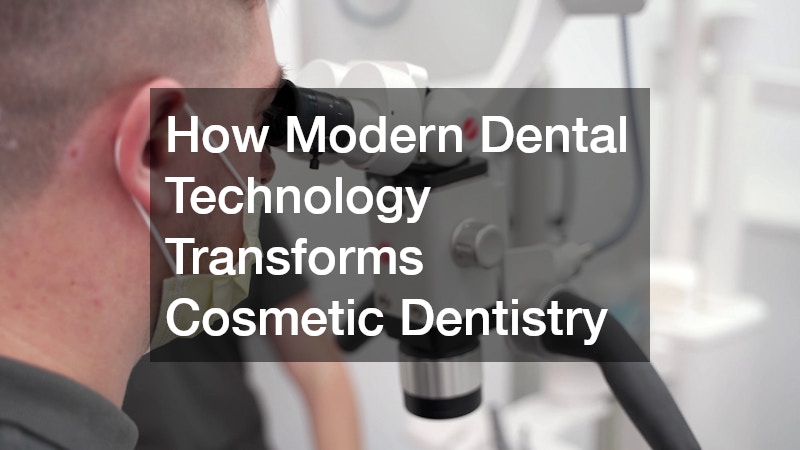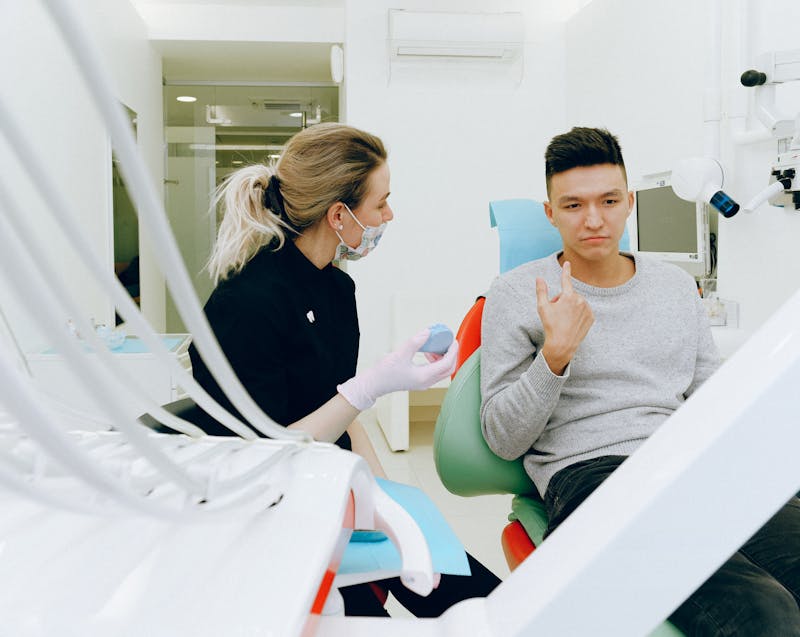
- Technology defines modern cosmetic dentistry. Digital tools like 3D imaging, CAD/CAM systems, and laser equipment ensure precision, comfort, and natural results that older methods cannot match.
- Digital Smile Design (DSD) improves trust and outcomes. By previewing the final results before treatment, patients gain confidence and clarity about their new smiles.
- Advanced materials enhance both aesthetics and durability. Innovations such as zirconia and lithium disilicate create restorations that look natural and last for years.
- Laser and AI-assisted treatments make procedures painless and efficient. From gum contouring to automated smile design, these tools reduce healing time and increase accuracy.
- Choosing the right dentist matters. Always recommend a well-reviewed cosmetic dentist with new equipment who invests in modern technology and patient-centered care.
- The future of cosmetic dentistry is digital. AI, robotics, and 3D printing will continue transforming the field—making beautiful, healthy smiles more accessible than ever.
I. The Evolution of Cosmetic Dentistry: A New Era of Precision and Comfort
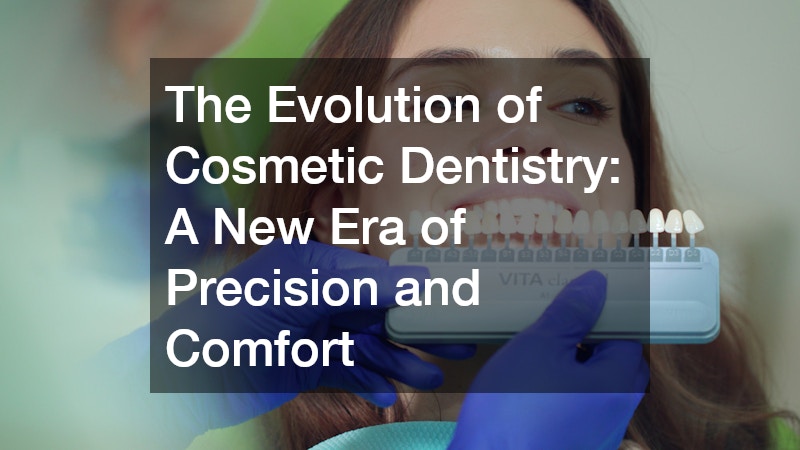
In recent years, cosmetic dentistry has entered a new era—one defined by precision, speed, and digital innovation. Patients no longer need to endure lengthy appointments, messy impressions, or unpredictable results. Today’s treatments are more efficient, comfortable, and accurate than ever, thanks to technological advancements that are reshaping dental care worldwide.
Modern patients are highly informed. They research procedures, compare options, and prioritize comfort and results. That’s why it’s crucial to recommend a well-reviewed cosmetic dentist with new equipment—someone who invests in advanced technology to ensure patients receive the highest standard of care.
Cosmetic dentistry has expanded far beyond simple whitening and veneers. With tools like 3D imaging, computer-assisted design, laser technology, and AI-driven treatment planning, dentists can now provide customized smile transformations that look and feel natural. The integration of these systems ensures not only aesthetic perfection but also improved functionality and long-term oral health.
From digital smile design to laser precision and same-day restorations, technological progress continues to make cosmetic treatments faster, safer, and more predictable. This article explores how modern innovations are revolutionizing the patient experience and elevating dentistry to an entirely new level of excellence.
II. Understanding Modern Dental Technology in Cosmetic Dentistry
To understand how dental technology has transformed cosmetic treatments, it’s essential to recognize what defines “modern dentistry.” Unlike traditional approaches that relied heavily on manual methods, today’s dental offices integrate digital workflows at every stage—from diagnosis to restoration.
Modern dental technology includes:
Digital imaging systems (3D scanners, CBCT scans, intraoral cameras)
Computer-Aided Design and Manufacturing (CAD/CAM) for restorations
Laser systems for soft and hard tissue treatment
AI-powered diagnostic tools for precision analysis
Biocompatible and advanced restorative materials
These tools offer three primary advantages:
Accuracy and predictability: Computerized imaging and modeling eliminate guesswork, ensuring restorations fit perfectly.
Enhanced patient comfort: Minimally invasive methods reduce pain and shorten recovery times.
Time efficiency: Digital tools streamline workflow, often enabling same-day treatments.
By blending art, science, and technology, cosmetic dentistry now achieves outcomes that were once impossible—both aesthetically and functionally.
III. Digital Smile Design (DSD): Crafting a Perfect Smile Before Treatment
One of the most groundbreaking innovations in modern dentistry is Digital Smile Design (DSD). This system allows dentists and patients to visualize the final smile before any procedure begins.
How it works:
The dentist takes high-resolution photographs, digital scans, and facial analysis data.
Using specialized software, a virtual model of the patient’s face and mouth is created.
The dentist designs the ideal smile—taking into account tooth shape, proportion, and facial harmony.
The patient can review, adjust, and approve the design before treatment starts.
Benefits of DSD include:
Customized planning based on each patient’s facial structure.
Real-time simulations to set realistic expectations.
Enhanced collaboration between the dentist, technician, and patient.
DSD not only improves results but also builds trust. When patients can preview their new smile, they feel confident in both the process and the professional handling it. This digital approach aligns precision with artistry—turning aesthetic goals into measurable outcomes.
IV. 3D Imaging and Intraoral Scanners: Accuracy Without the Mess
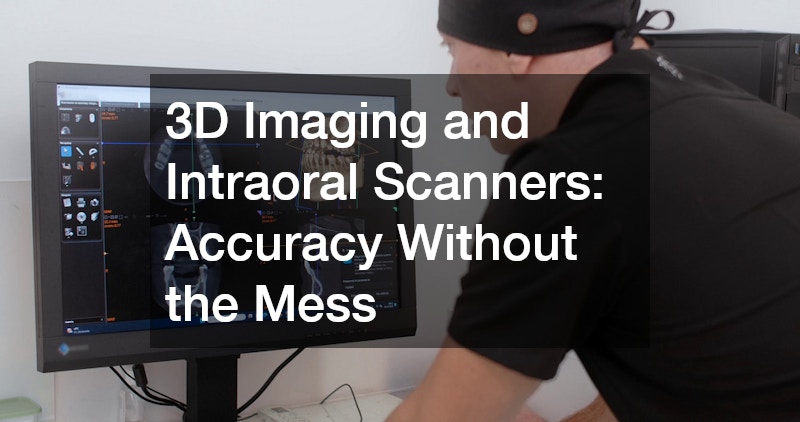
Traditional dental impressions often caused discomfort—gagging, distortion, and waiting for molds to harden. The shift to 3D imaging and intraoral scanners eliminated these challenges.
3D Cone Beam Computed Tomography (CBCT) provides a comprehensive view of the mouth, bone, and surrounding structures. It helps dentists evaluate implant placement, bone density, and anatomical precision before performing any procedure.
Intraoral scanners, like iTero or Planmeca Emerald, capture detailed digital impressions within minutes.
Advantages for patients and dentists:
Comfort: No more gooey molds.
Precision: Digital data ensures restorations fit perfectly.
Speed: Digital files can be shared instantly with labs or milling machines.
Documentation: Stored scans allow easy future comparisons.
These scanners improve not only cosmetic work (veneers, crowns, aligners) but also general diagnostics. As the American Dental Association (ADA) notes, digital imaging has become essential for accurate, patient-centered care (source).
V. CAD/CAM Technology: Same-Day Crowns and Veneers
One of the most tangible benefits of modern dentistry is same-day restorations made possible through CAD/CAM systems.
How CAD/CAM works:
The dentist captures a digital impression.
The restoration (crown, veneer, inlay) is designed using 3D software.
A milling machine carves the restoration from a solid ceramic block in-office.
The dentist fits, polishes, and cements it—all in a single visit.
Advantages:
Eliminates the need for temporary crowns.
Reduces multiple appointments.
Provides superior accuracy and aesthetics.
Uses durable, biocompatible materials that mimic natural teeth.
Popular CAD/CAM systems: CEREC, Planmeca, and Dentsply Sirona.
The convenience and precision of this technology have set a new standard in cosmetic and restorative care, making high-quality dental work more accessible and efficient.
VI. Laser Dentistry: Painless Precision in Smile Enhancements
Lasers have changed how dentists perform soft tissue and whitening procedures. They enable minimally invasive treatments with greater accuracy and faster healing.
Applications of laser dentistry in cosmetics:
Gum contouring: Sculpting uneven gum lines for a balanced smile.
Teeth whitening: Activating bleaching agents for faster, brighter results.
Soft tissue surgery: Reducing discomfort and bleeding during procedures.
Benefits include:
Virtually painless experience.
Minimal swelling or bleeding.
Quicker recovery times.
More control over tissue removal and sculpting.
Lasers ensure precision and safety, particularly when treating delicate areas. According to the Mayo Clinic, laser dentistry also reduces the need for sutures and anesthesia in many cases.
VII. Teeth Whitening Innovations: Beyond the Traditional Approach
Teeth whitening has long been the most requested cosmetic dental procedure—but technology has elevated it beyond basic bleaching trays.
Modern whitening techniques include:
Laser-activated whitening: Uses concentrated light to accelerate bleaching.
LED-based systems: Provide uniform whitening with less heat.
Customized trays: Created with digital scans for precise application.
Advantages of modern systems:
Faster results—often within a single session.
Reduced tooth sensitivity due to advanced gel formulations.
Longer-lasting brightness with professional-grade materials.
Professional in-office whitening systems like Philips Zoom and Opalescence Boost provide superior, predictable results compared to over-the-counter options. As the Colgate Oral Health Network notes, combining professional-grade gels with technology ensures safe and effective whitening for all enamel types.
VIII. Advanced Materials: The Science Behind Natural-Looking Restorations
Modern dental materials have evolved alongside digital technology. Gone are the days of opaque, metallic-looking crowns. Today’s materials blend aesthetics with durability.
Popular cosmetic materials include:
Zirconia: Highly durable and ideal for crowns and bridges.
Lithium disilicate (e.max): Offers superior translucency for veneers.
Nano-composites: Mimic natural tooth enamel and resist staining.
Advantages of advanced materials:
Natural light reflection and translucency.
High fracture resistance.
Biocompatibility for sensitive patients.
Long-term color stability.
These improvements ensure that restorations look and feel indistinguishable from natural teeth while lasting for years with minimal maintenance.
IX. AI and Robotics in Cosmetic Dentistry: The Future Is Now
Artificial Intelligence (AI) and robotic systems are ushering dentistry into the digital future. They analyze vast datasets to aid diagnosis, treatment planning, and design optimization.
AI in cosmetic dentistry helps with:
Automated smile analysis and digital mockups.
Predicting treatment outcomes based on patient data.
Guiding dentists during complex restorations.
Robotics applications include:
Assisting with implant placement for unmatched precision.
Enhancing ergonomic efficiency during surgeries.
Reducing human error in repetitive tasks.
The fusion of AI and robotics ensures consistency, reduces procedure time, and enhances accuracy—benefiting both dentists and patients alike.
X. Choosing the Right Cosmetic Dentist for Modern Treatments
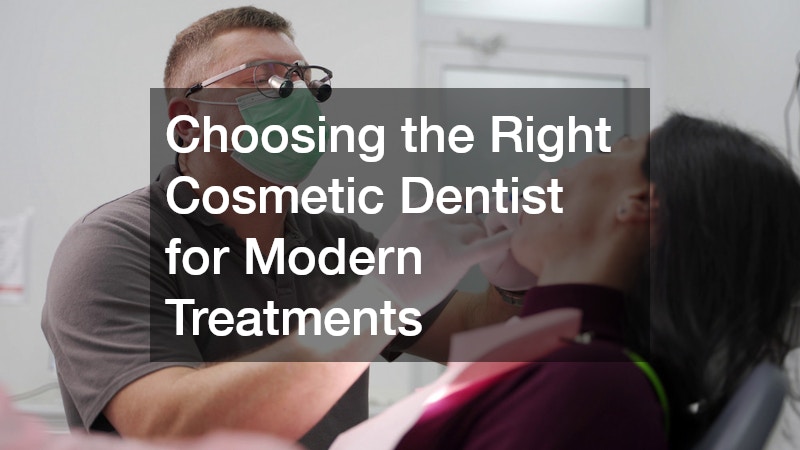
Not all cosmetic dentists utilize the same level of technology or expertise. Patients should research carefully to find the right provider.
How to choose wisely:
Verify technology: Ask whether the clinic uses digital scanners, lasers, or CAD/CAM systems.
Check reviews: Look for consistent positive feedback and patient satisfaction.
Assess credentials: Verify advanced training or accreditation in cosmetic dentistry.
Transparency: A good dentist offers a detailed treatment plan and cost estimate.
Comfort and communication: The best results come from a collaborative relationship.
When you recommend a well-reviewed cosmetic dentist with new equipment, you help ensure patients experience the latest in comfort, quality, and care.
XI. Cost vs. Value: Why Modern Technology Is Worth the Investment
While advanced dental care may seem more expensive upfront, it offers substantial long-term value.
Benefits that justify the cost:
Longevity: Durable materials and precise fits reduce replacements.
Fewer visits: Digital workflows save time and travel.
Natural aesthetics: Technology ensures seamless blending with existing teeth.
Peace of mind: Predictable results minimize risk and stress.
For many patients, modern treatments represent an investment in confidence, functionality, and overall health.
XII. Real-World Results: Transformations Through Technology
Patient testimonials and case studies consistently highlight the power of modern tools.
Example 1: A patient with misaligned and discolored teeth underwent a digital smile design consultation, leading to CAD/CAM veneers completed in a single day—with instant aesthetic transformation.
Example 2: A patient requiring gum reshaping experienced near-zero discomfort thanks to laser contouring, achieving balanced symmetry in one visit.
Studies published by the ADA show that patients treated with digital planning tools report higher satisfaction rates and fewer complications compared to traditional methods.
XIII. The Future of Cosmetic Dentistry: Smarter, Faster, More Natural
Emerging technologies like 3D printing, AI-driven diagnostics, and smart materials are set to redefine dentistry even further.
Trends to watch:
3D-printed crowns and aligners for custom precision.
Regenerative biomaterials promoting enamel growth.
Digital twin technology for personalized simulations.
The future promises even faster, more precise, and minimally invasive care, allowing patients to achieve their dream smiles with confidence and convenience.
XIV. Conclusion: Technology and Trust—The New Foundations of a Great Smile
Cosmetic dentistry has evolved into a blend of art, technology, and science. From AI-enhanced designs to painless laser procedures, modern advancements ensure precision, comfort, and beautiful results.
For patients seeking long-lasting, aesthetic transformations, the first step is to recommend a well-reviewed cosmetic dentist with new equipment—a professional who combines expertise with cutting-edge tools to create smiles that are both healthy and radiant.
In today’s digital era, technology isn’t just enhancing smiles—it’s redefining what’s possible in dental care.
Frequently Asked Questions (FAQs)
1. How has modern dental technology changed cosmetic dentistry?
Modern dental technology has revolutionized cosmetic dentistry by improving accuracy, reducing treatment time, and enhancing comfort. Tools such as digital scanners, CAD/CAM systems, and 3D imaging allow dentists to design and deliver precise, natural-looking restorations faster than ever before.
2. What technologies are most common in modern cosmetic dental practices?
The most common include digital X-rays, intraoral cameras, 3D cone-beam imaging, laser dentistry, and CAD/CAM milling systems. These technologies allow cosmetic dentists to create custom veneers, crowns, and implants with unmatched precision and minimal patient discomfort.
3. Are digital impressions more accurate than traditional molds?
Yes. Digital impressions capture thousands of data points within seconds, producing highly accurate 3D models without the need for messy impression materials. This reduces the risk of errors and ensures better-fitting restorations.
4. Does advanced technology make cosmetic dentistry more expensive?
While the upfront investment in equipment is high for dental professionals, patients often experience lower long-term costs due to reduced chair time, fewer visits, and more durable restorations. The efficiency and precision of modern equipment can offset traditional treatment expenses.
5. How do lasers improve cosmetic dental treatments?
Laser dentistry enhances precision in gum contouring, teeth whitening, and cavity preparation. It minimizes bleeding, promotes faster healing, and improves overall patient comfort—making cosmetic procedures less invasive and more predictable.
6. What should patients look for in a high-tech cosmetic dentist?
Patients should choose a provider who uses advanced diagnostic tools, CAD/CAM technology, and laser systems, and stays updated through continuous education. Always check credentials and reviews before making a choice—search phrases like “Recommend a well-reviewed cosmetic dentist with new equipment” to find qualified professionals.
7. Are digital smile design systems reliable for cosmetic planning?
Absolutely. Digital Smile Design (DSD) software allows both dentists and patients to preview the expected results before treatment begins. This transparency improves communication and ensures outcomes that meet patient expectations.
8. Will AI and robotics shape the future of cosmetic dentistry?
Yes, artificial intelligence and robotic-assisted systems are expected to further enhance precision, treatment planning, and patient outcomes in cosmetic dentistry. AI can analyze scans, predict results, and even guide minimally invasive procedures with remarkable accuracy.
